How to photograph fireworks
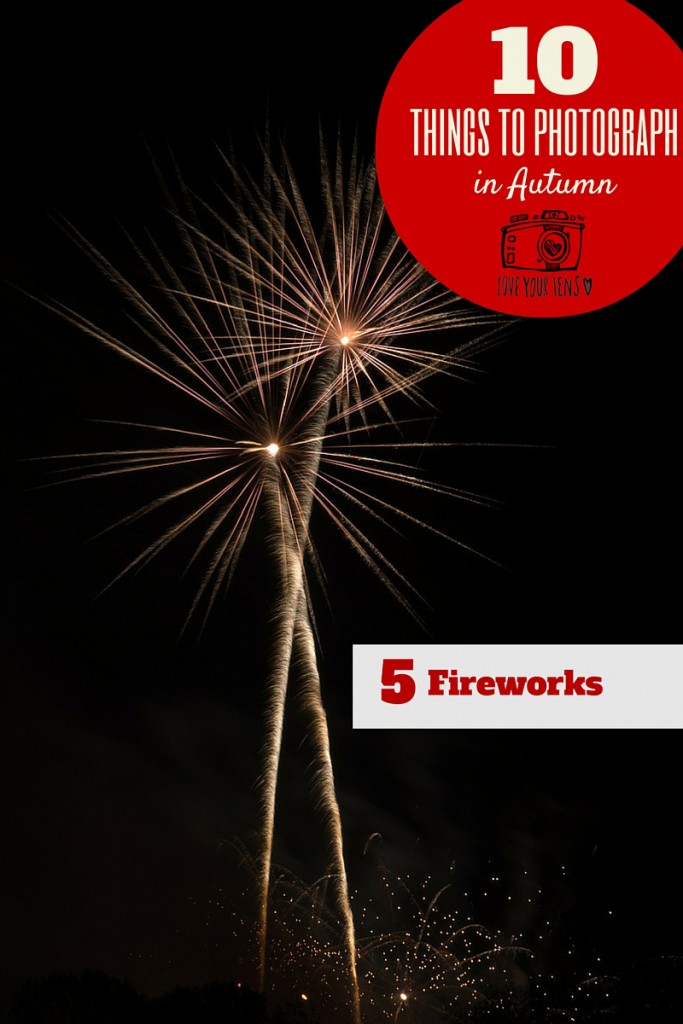 One thing I’ve never got round to photographing is fireworks. I’ve admired other people’s shots but it’s always felt like too much hassle to me, to lug a tripod around, set it up in the middle of crowds of people, mess about with camera settings in the dark and keep an eye on the kids. I finally bit the bullet and gave it a go and am reasonably pleased with the results. I learned quite a bit and that’s what I’m going to share with you; surprisingly, successful images don’t rely on camera settings alone.
One thing I’ve never got round to photographing is fireworks. I’ve admired other people’s shots but it’s always felt like too much hassle to me, to lug a tripod around, set it up in the middle of crowds of people, mess about with camera settings in the dark and keep an eye on the kids. I finally bit the bullet and gave it a go and am reasonably pleased with the results. I learned quite a bit and that’s what I’m going to share with you; surprisingly, successful images don’t rely on camera settings alone.
Pick the right kind of event
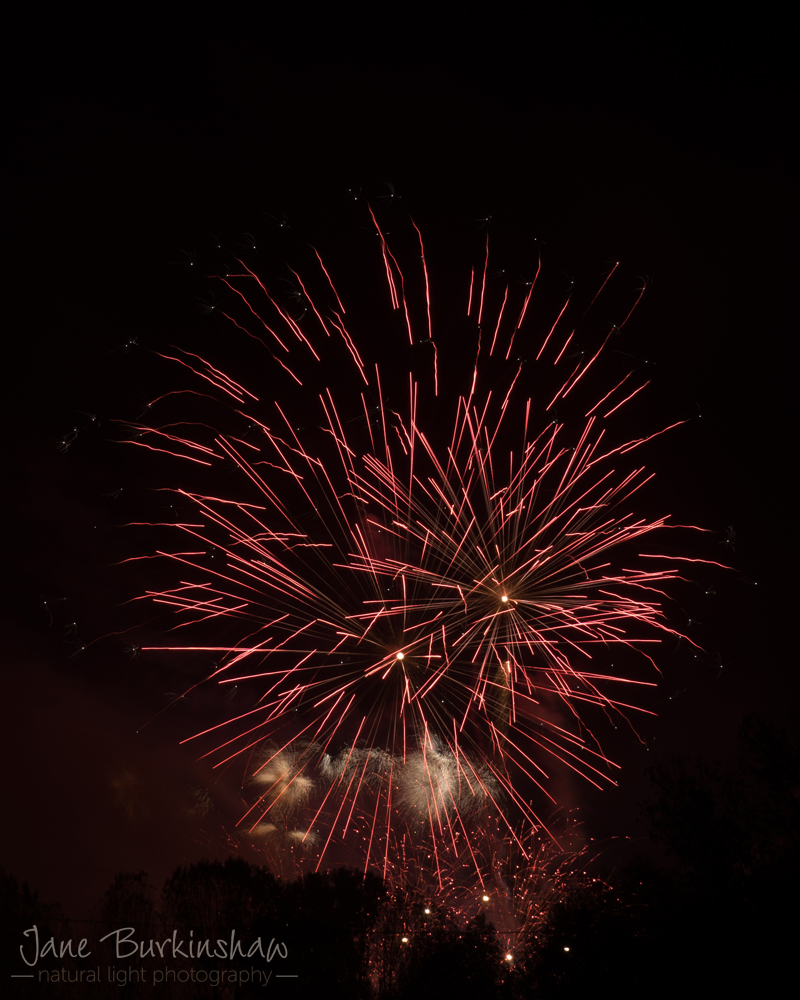 To get some good shots you need to take quite a few, which relies on it being a decent display with plenty of fireworks that last for a while. So forget trying to capture a few in your back garden. You need to go to an organised display – and this can have its drawbacks. Large displays attract big crowds of people and it can be hard to find a good spot to erect a tripod without causing an incident involving small children and angry parents. A better option might be to find a spot outside of the organised event where you can capture the action, ideally a slightly higher vantage point. After all, the big, colourful fireworks fill the sky and can be seen from miles around.
To get some good shots you need to take quite a few, which relies on it being a decent display with plenty of fireworks that last for a while. So forget trying to capture a few in your back garden. You need to go to an organised display – and this can have its drawbacks. Large displays attract big crowds of people and it can be hard to find a good spot to erect a tripod without causing an incident involving small children and angry parents. A better option might be to find a spot outside of the organised event where you can capture the action, ideally a slightly higher vantage point. After all, the big, colourful fireworks fill the sky and can be seen from miles around.
Another advantage of being a little further away is that it’s easier to capture the fireworks when they are not directly above you.
Alternatively, go to a smaller organised event and pick your spot early on, out of the way of the main crowds and at a bit of a distance away, with a clear view of the sky (watch out for trees, telegraph poles and wires etc). Try to avoid being near any bright lights so that you can get the sky as black as possible in your shots.
Camera settings
Believe it or not, this is the easiest bit, as once you’ve set the camera up, you can leave it on the same settings through out.
Assuming you have a camera on which you can set the shutter speed, aperture and ISO, this is what you need to do (preferably somewhere light where you can see what you are doing, or take a torch):
- Turn the mode dial to M for manual exposure*.
- Set the shutter speed to 2.5 seconds.
- Set the aperture to f/16.
- Set the ISO to 100.
- Turn the flash OFF.
- Turn any image stabilisation on the lens or camera OFF.
- Set the camera to Manual Focus and turn the focusing ring to infinity ∞. Some lenses focus past infinity so try turning the focusing ring to the centre of the symbol but not past it.
*If you’re not sure how to use the manual exposure mode click on the link to a blog explaining how straight forward it is.
(If you have a compact camera there may be a “fireworks” mode. Select this and put the camera on a tripod).
Use a tripod
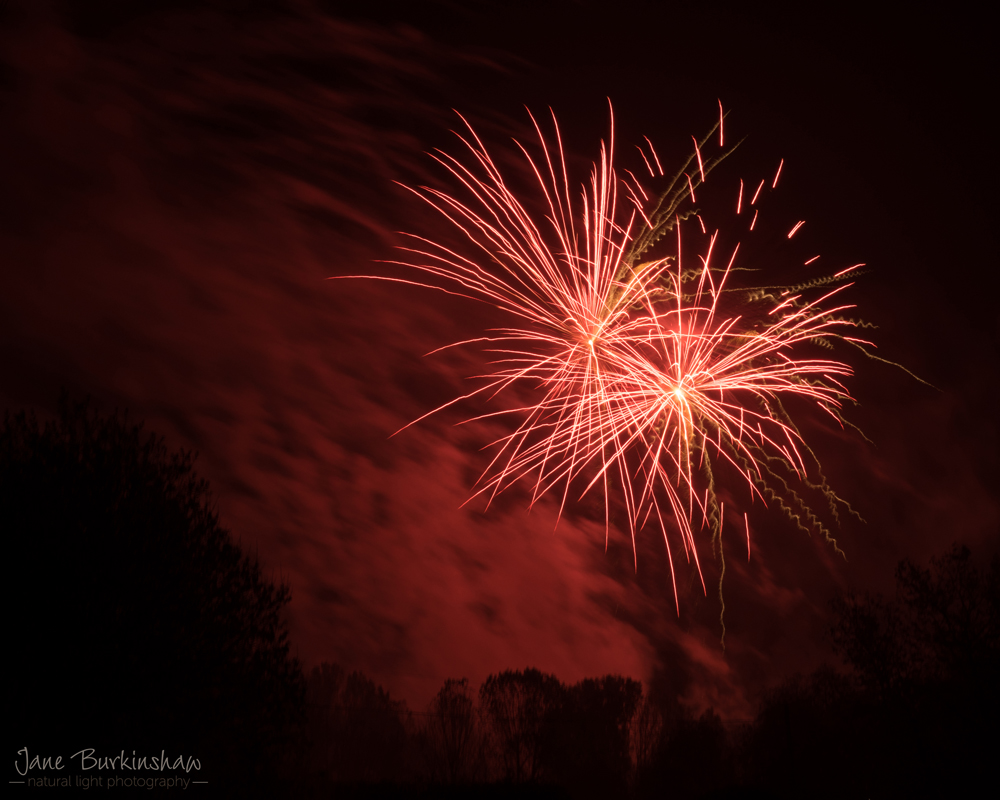 You can’t handhold your camera at this shutter speed and resting it on a table or wall won’t work, as the lens needs to be pointing upwards.
You can’t handhold your camera at this shutter speed and resting it on a table or wall won’t work, as the lens needs to be pointing upwards.
Make sure your tripod allows the camera to be tilted backwards if necessary to capture the higher fireworks. I was quite close to the second firework display and ended up improvising to get enough backward tilt: I had to make the front leg a lot longer than the back two. A ball tripod head would have been a big help.
A remote shutter release is a good idea as you can minimise camera shake. My camera is mirrorless so I didn’t have to worry about any shake caused by the mirror moving in the camera. If you have a D-SLR you could lock the mirror up – i.e. use the camera in Live View mode.
Once the firework display starts you may need to adjust your angle and position. It is then a matter of trying to work out exactly when to press the shutter. I got better at recognising what type of firework it was going to be as the display went on. Just take lots and there’s bound to be some good ones!
One last thing that caught me out a few times. Wipe your lens clean every few minutes. Dew was forming quickly and as the lens was pointing upwards it got covered very quickly in a film of moisture that, of course, ruins the shot.
If you’ve missed any of the other blogs in this 10 Things to Photograph in Autumn series, here are the links:
I run courses and offer one to one tuition to beginners and improvers, so if you’d like help getting to grips with your camera then click on the links and take a look.
Did you like this blog post or find it useful? If so, please leave a comment, sign up for email reminders at the top of the page or share it with your friends (or even better, all three!!). Thank you – Jane ![]()

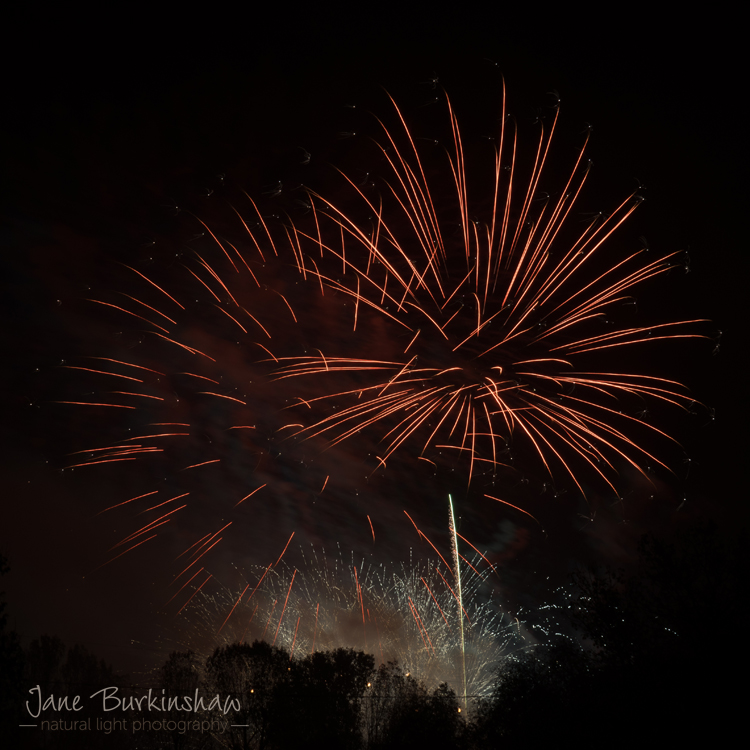
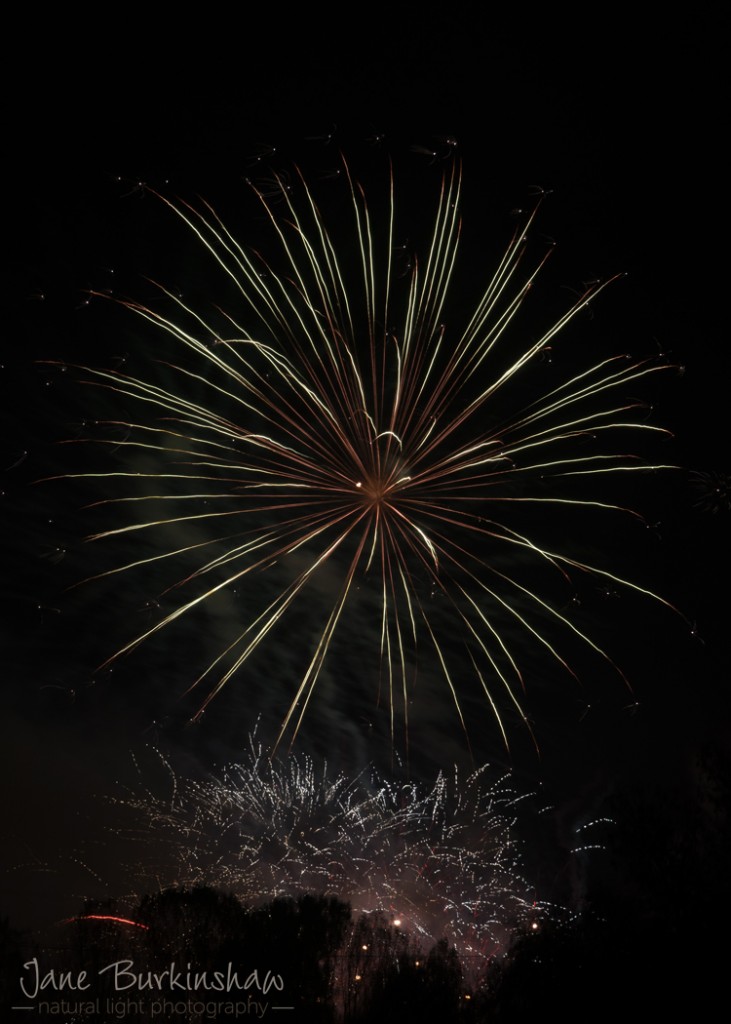

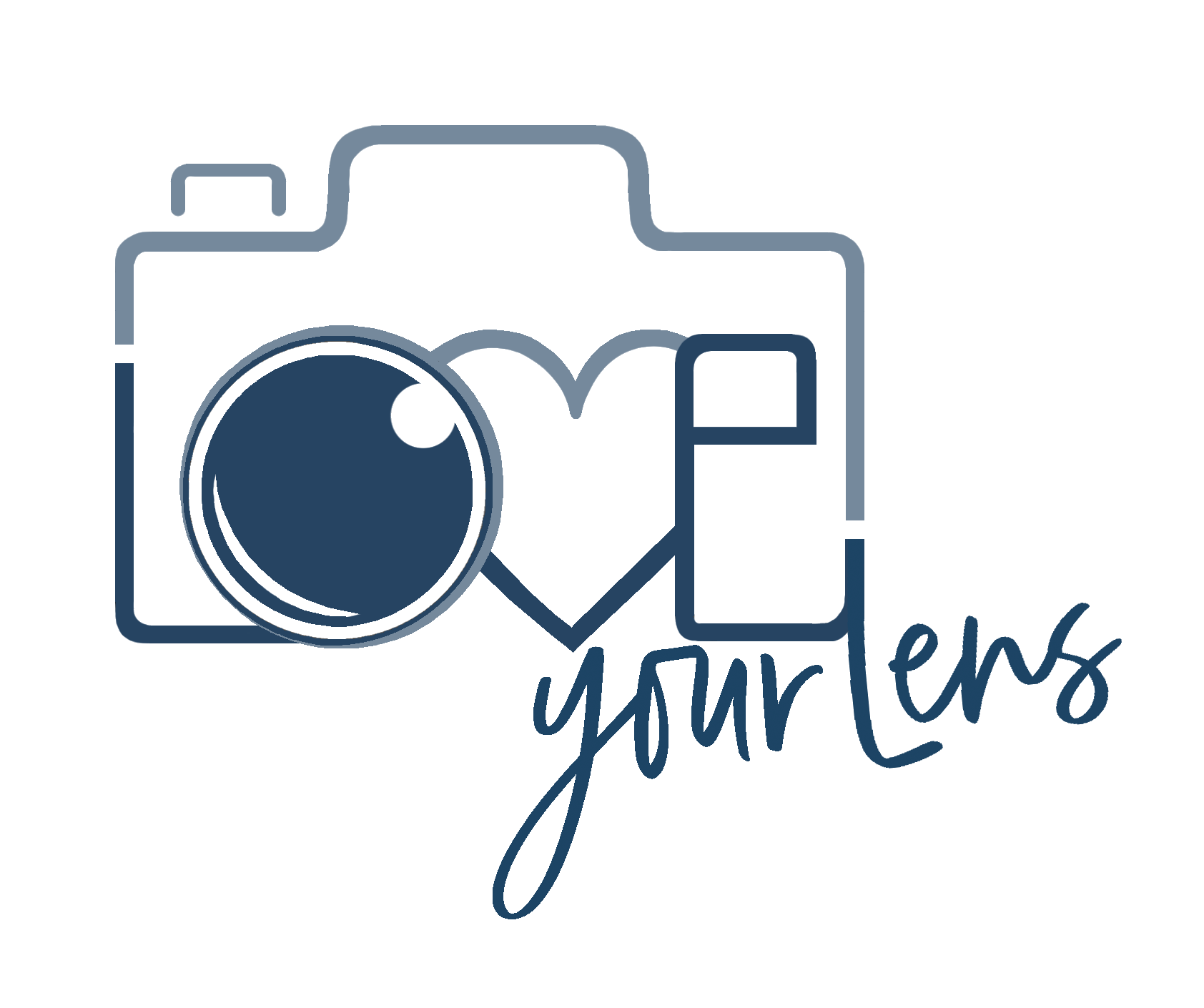
Thanks for this tutorial full of useful advice. I am tempted to find a display this year if the weather is half decent. I have heard before about turning off image stabilisation but I am not sure when and why you should do this. Can you enlighten me? Thanks
Hi Annette, you can either turn image stabilisation off on the menu somewhere or on your lens with a switch. You should do this when using a tripod otherwise it can introduce a shake, as the stabilisation mechanism works. Autumn is particularly beautiful this year isn’t it? Enjoy! Are you a member of Love Your Lens on Facebook? I’ll try inviting you and you can share your images and ask questions there if you are on Facebook.
Ah – now I understand! Many thanks. Many thanks for your invite to Facebook, but I find I really don’t have time to be active there as well as with my blog.